
Lyngbya Treatment with AquaSticker
by Deborah Lee
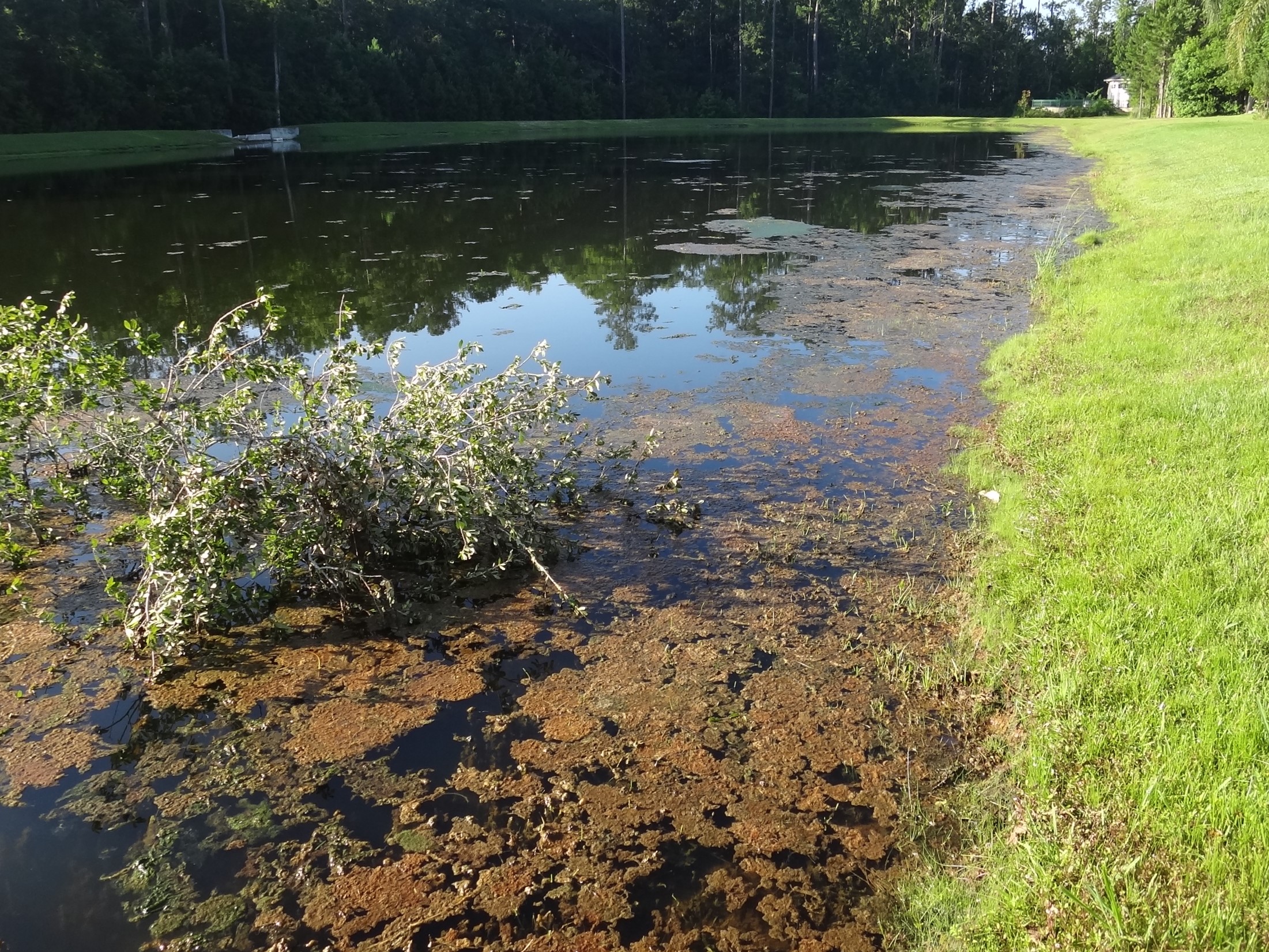
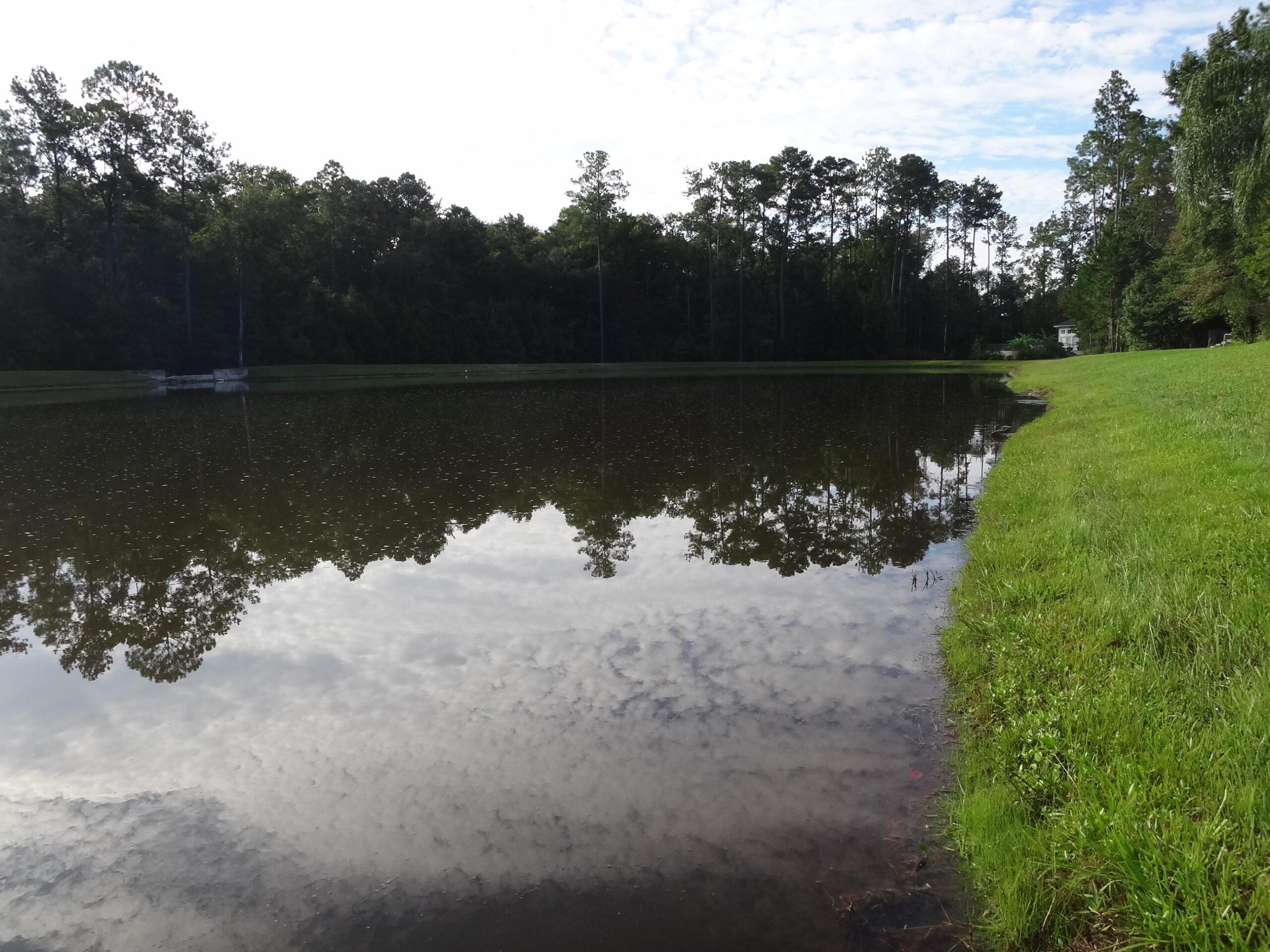
Objective
Show that AquaSticker added to an algaecide tank mix is more effective on Lyngbya than the algaecide tank mix alone.

Summary
During the test, AquaSticker alone did not cause any damage to Lyngbya cells or filaments. However, when combined with algaecide treatments, AquaSticker showed increased bacterial growth and inflicted more damage on Lyngbya cells and filaments compared to treatments without AquaSticker. Furthermore, the algaecide treatment combinations with AquaSticker exhibited greater suppression and degradation of Lyngbya compared to treatments without AquaSticker. Surprisingly, both AquaSticker alone and Cutrine Plus alone resulted in an increase in Lyngbya growth by the end of the testing period. The combination of AquaSticker, Cutrine Plus, and Hydrothol 191 proved to be the most effective, showing over 10 times more suppression and degradation of Lyngbya compared to the combination of Cutrine Plus and Hydrothol 191. Additionally, the combination of AquaSticker and Cutrine Plus demonstrated 3 times better suppression and degradation of Lyngbya compared to Cutrine Plus and Hydrothol 191. Cutrine Plus alone was found to be ineffective in suppressing or damaging Lyngbya in this test, leading to a 200% increase in Lyngbya growth. Finally, the combination of Cutrine Plus and Hydrothol showed minimal effectiveness in suppressing or damaging Lyngbya in this test.
Methods
9oz clear plastic cups were labeled and mass was recorded. The preferred media for Lyngbya grown in the lab was used. This is BG11 N+ diluted five-fold in dechlorinated tap water with 0.2% vitamin mix added. The cups were filled with 200ml each of the Lyngbya media. Pieces of Lyngbya were blotted on paper towels to remove excess water. 0.100g±0.003g of black Lyngbya was added to each cup. The mass of the cups with media and algae were recorded.Products were added to 1 ml of water removed from the cup with the corresponding number and resuspended five times to mix. The mixtures were then added to the corresponding cup in a random dropwise manner across the cup surface. The cups were photographed and then placed on a Vivosun heat mat controlled by a Vivosun controller set to 25°C.
The tops of the cups were about 14 inches under the T4 cool fluorescent (6w) grow light. The lights were on a 8h:16h light:dark cycle. To prevent excessive evaporation, the cups were covered loosely with plastic wrap. Every day for the 10 day test period, the cups were uncovered, photographed, and 20ml of media was exchanged with fresh media.
At the end of the test period, the cups were drained of most of the media and placed uncovered back on the mat. The liquid in the cups was evaporated for five days before the final mass of the cups containing dry algae was recorded. Dry algal biomass was determined by subtracting the final cup and algal mass from a sacrificial set prepared initially.
Treatment Table

Results
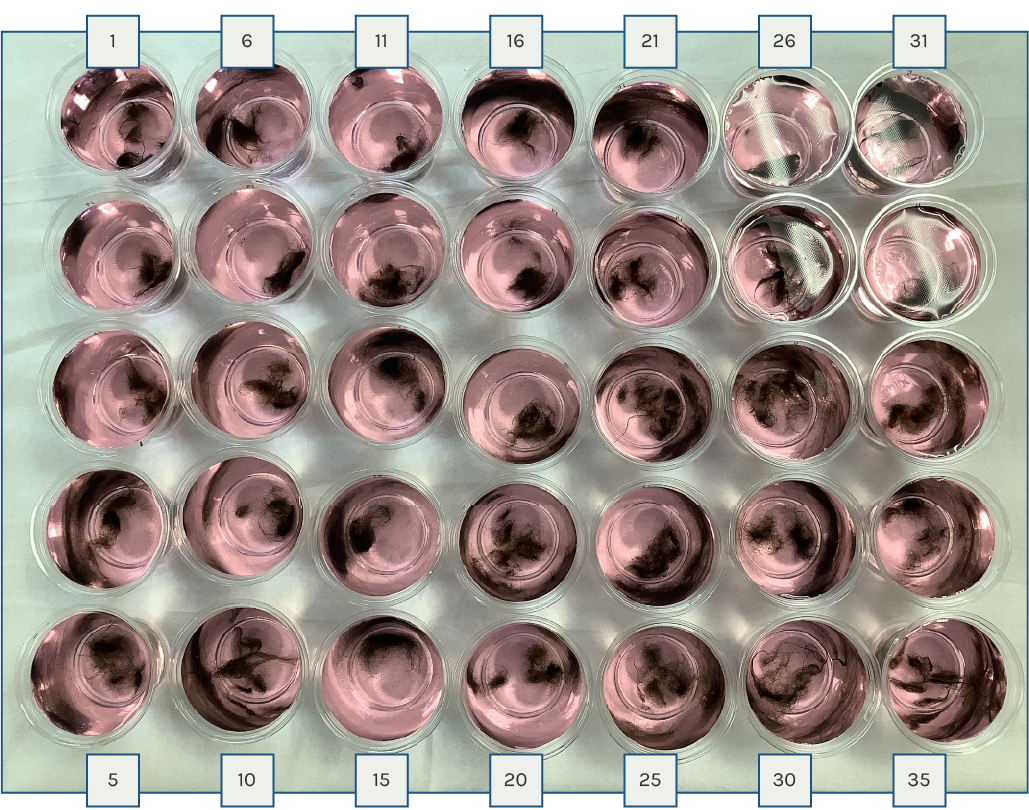
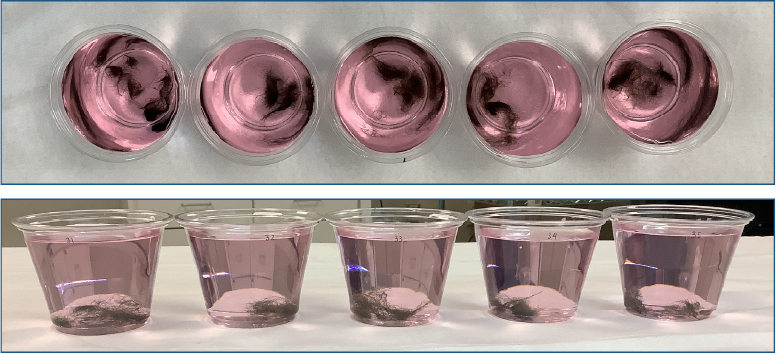
They were set up the same as the other cups and had one milliliter of media applied before the cups were drained and set to dry.
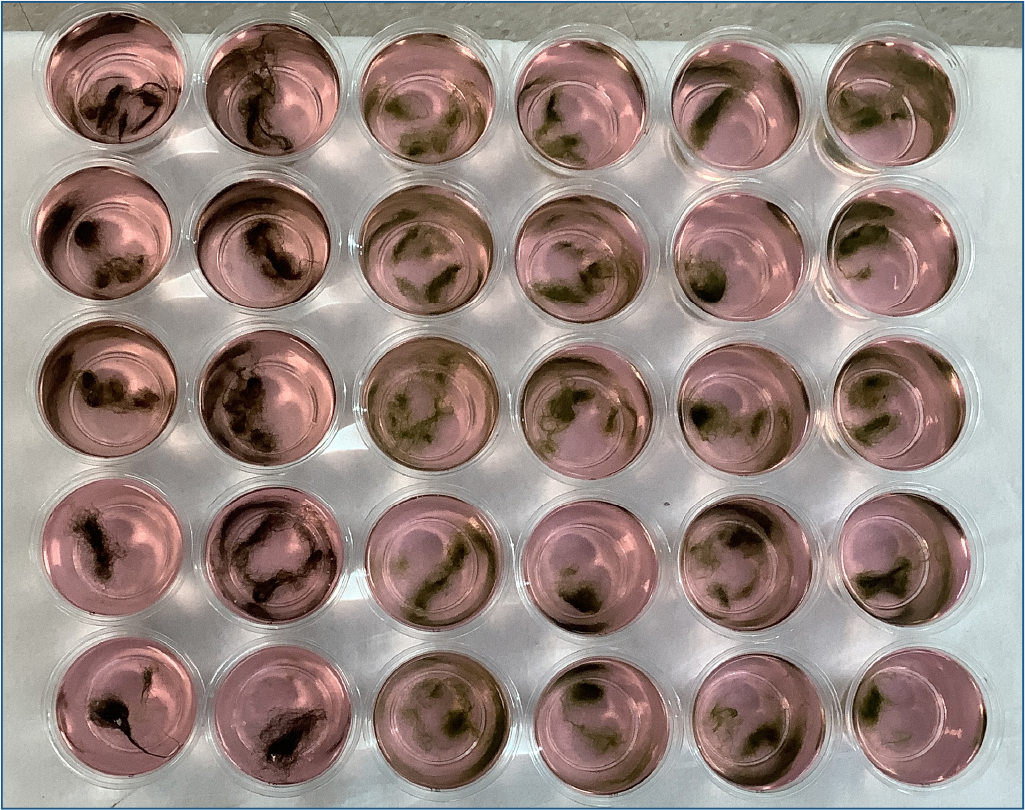
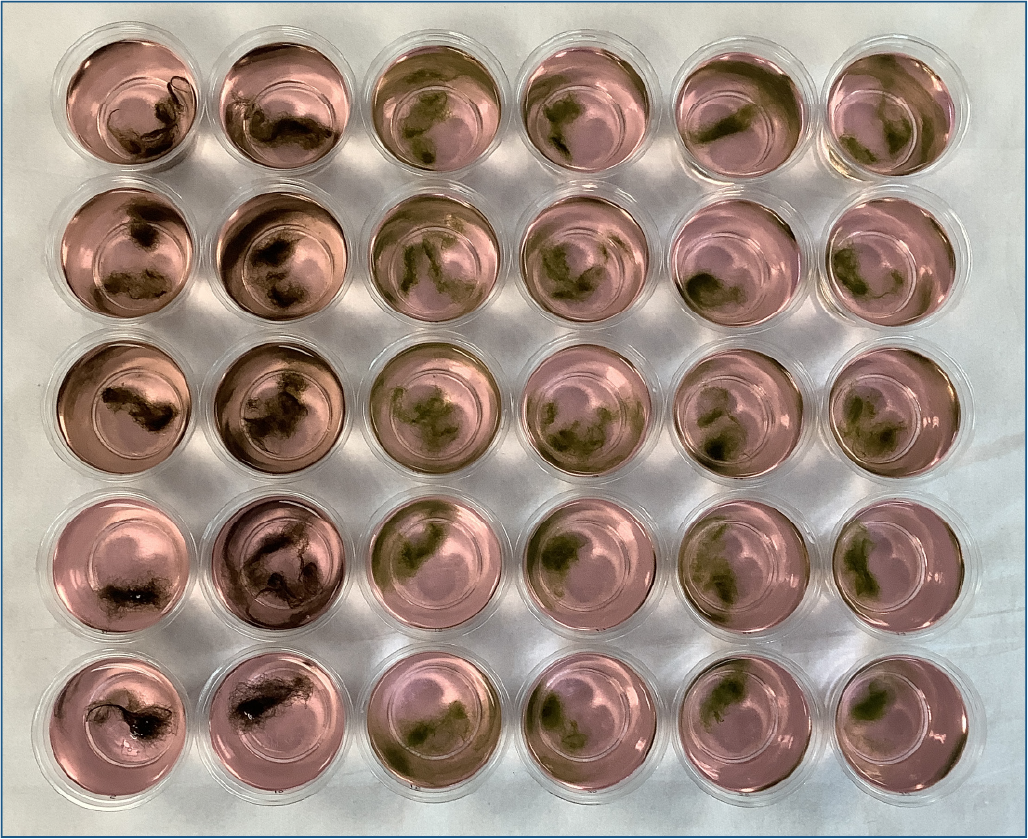
AquaSticker – Some growth of bacteria on healthy looking Lyngbya filaments
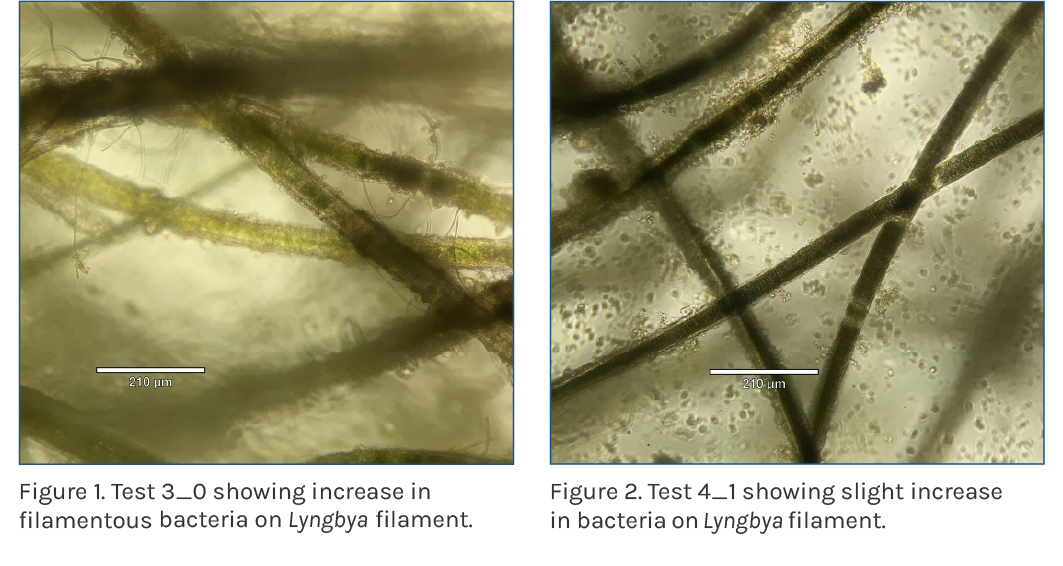
Cutrine Plus – Damaged cells, but mostly intact filaments
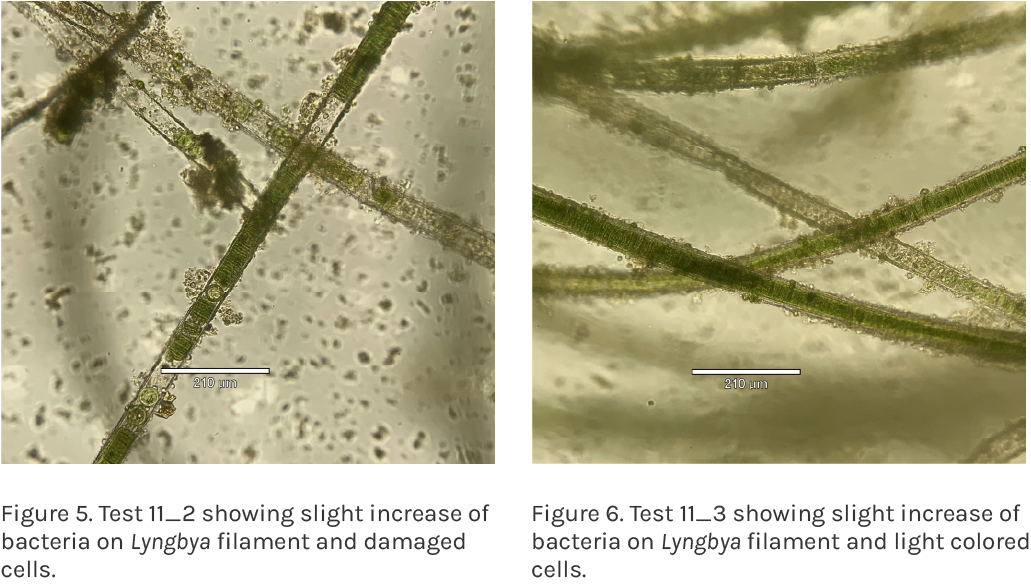
AquaSticker + Cutrine Plus – Damaged cells and noticeable bacterial growth along the outside of the Lyngbya filaments
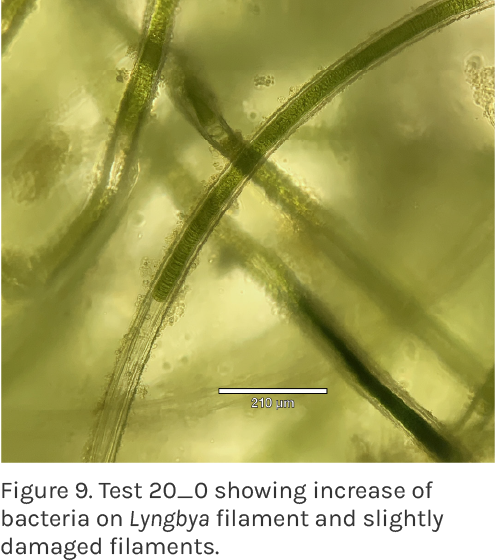
AquaSticker + Cutrine Plus + Hydrothol 191 – There was visible microscopic damage to the Lyngbya filaments in the AquaSticker + Cutrine Plus + Hydrothol 191 treated cups
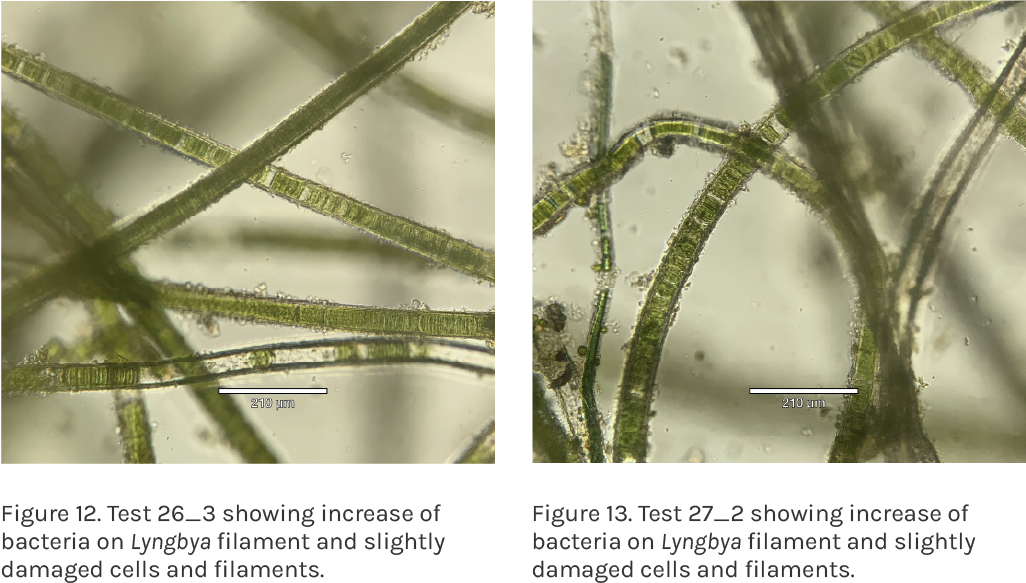

Control – Healthy Lyngbya filaments with low growths on bacteria on the filaments
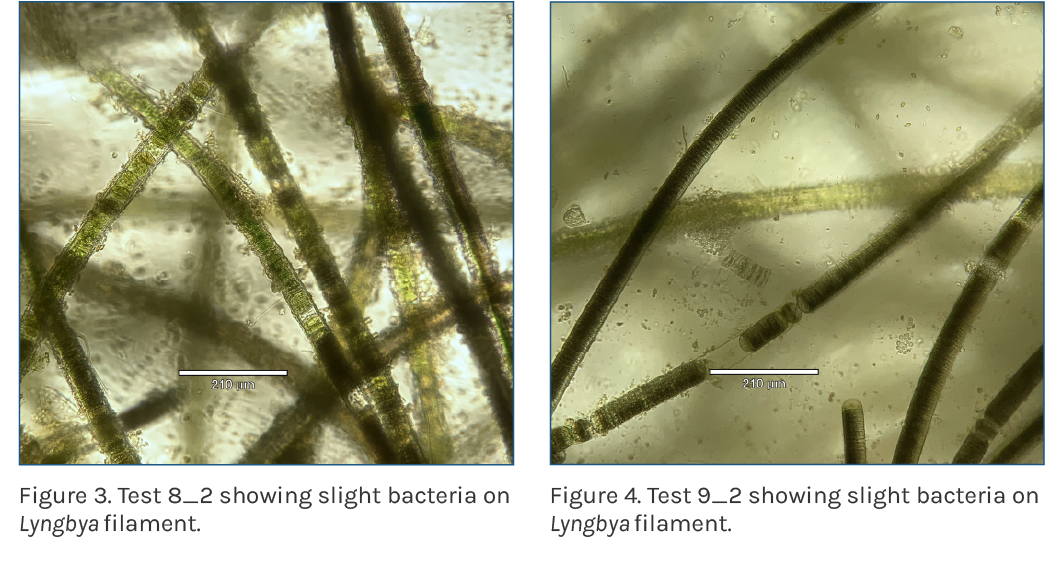
AquaSticker + Cutrine Plus – Damaged cells and noticeable bacterial growth along the outside of the Lyngbya filaments
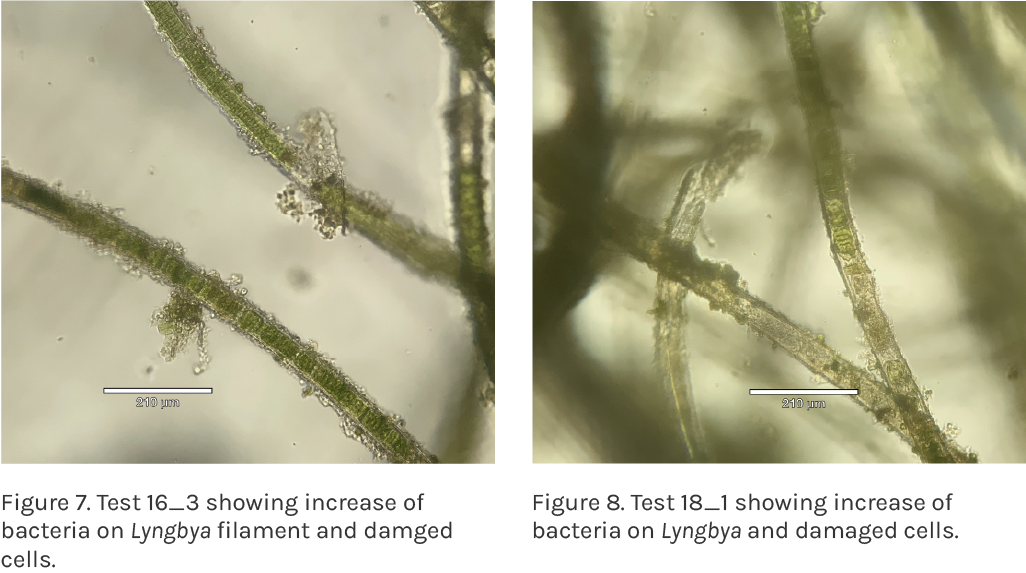
Cutrine Plus + Hydrothol 191 – Damaged cells, similar to Cutrine Plus alone
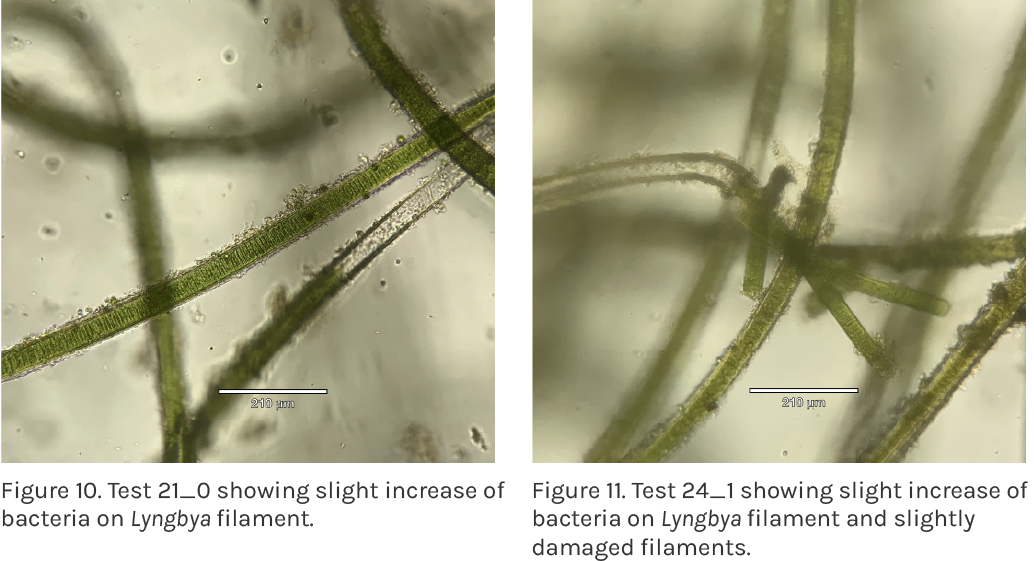
AquaSticker + Cutrine Plus – Damaged cells and noticeable bacterial growth along the outside of the Lyngbya filaments
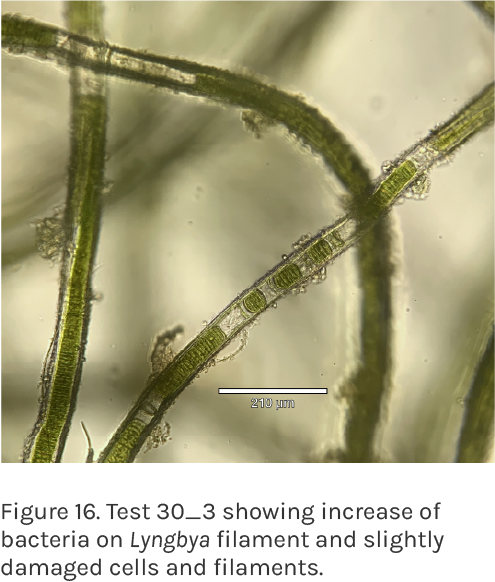
Dry Weight Over Initial and Percent Growth Over Control
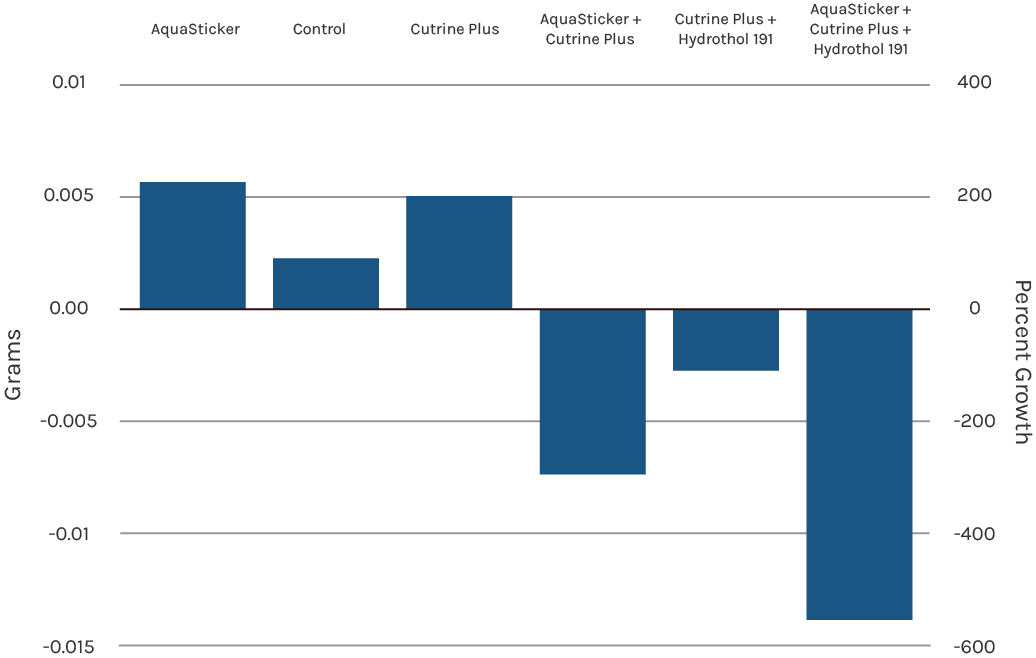
Discussion
Lyngbya is a benthic filamentous cyanobacterium that is difficult to control. This is due to the thick sheath surrounding the filaments as well as the attached growth of some diatoms in certain environments. Both the thick sheath and presence of attached epiphytic algae, such as diatoms, act as physical barriers to chemical control agents protecting the cells from damage and from uptaking inhibiting metals, such as copper ions. Most of the fastest control options focus on chemical herbicides/algaecides. For example, treating an area of Lyngbya first with a peroxide algaecide and then coming back an hour later and applying a copper algaecide. This takes more time than just applying one algaecide and it also increases the risk of releasing toxins from the cyanobacterial cells. A lot of literature recommends raking Lyngbya mats out of the pond to counter the risk of released toxins, however, this is physically intensive and takes a lot of time. This method also needs to be repeated frequently to keep controlling new growth. Adding a compound to provide better treatment that can be applied as a tank mix and kills Lyngbya without releasing toxins and also decreases growth would be more effective than currently available management methods.
AquaSticker is a biocatalysts that we developed to aid in herbicide/algaecide treatments on plants/algae. It is a dry product that can be added into a tank mix to increase the effectiveness of the herbicide/algaecide mix on the target organisms. Some ways this may occur is: 1) through increasing the viscosity of the mix to keep the aqueous chemicals near the target organism(s), 2) increase the rate at which the chemicals get into the target cells, 3) increase damage on already weakened/damaged areas of filamentous algae or on plant structures, or 4) alter the biofilm on the surface of algae/plants and make it less synergistic with the host. In this test, we found that adding AquaSticker (20 lbs/acre) in combination with Cutrine Plus (3 gal/AF) and Hydrothol 191 (0.2ppm) resulted in Lyngbya dry mass that was lower than the initial dry mass at the start of the test. This indicates that this treatment prevented Lyngbya growth over the nine days of the test and also may have resulted in degradation of some of the algal biomass, which would result in lower ending dry mass compared to the initial dry mass.
The combination of AquaSticker, Cutrine Plus, and Hydrothol 191 has been previously recommend to applicators in the field. The use of just AquaSticker combined with Cutrine Plus has also been used in the field and can be effective with higher efficacy in soft water. It is known that Hydrothol 191 is seldom used in the field alone to treat algae, and so was not tested alone here, but can sometimes provide an increase in treatment efficacy on some types of algae. In areas with lower Lyngbya biomass than the 0.1g used in this test, there may be an increased thickness of the bacterial biofilm coating the filaments. This alone could be detrimental to the algae since it can inhibit the exchange of nutrients with the algae and also algal waste products with the environment. Although toxin release was not tested here, increasing the bacteria-induced degradation of the dead/damaged Lyngbya filament has the potential to lower the release of toxins, since degradation would occur slower than cell lysis that is seen with peroxide algaecides and you have the potential to recruit bacterial and fungal species that can detoxify any release toxins. In areas with thick mats and high biomass, there will be a need for repeat treatments which is the same as with any algaecide treatment. Adding products containing bacteria, such as Temperature Driven Solutions, after the tank mix treatment could help to improve bacterial degradation of Lyngbya which could help to delay time needed between treatments as the bacteria would leave less available nutrients for the undamaged Lyngbya to regrow.
Conclusions
Lyngbya is a difficult to control filamentous cyanobacteria. This study shows that combining commonly used pesticides with the Natural Lake Biosciences’ biocatalyst AquaSticker can improve efficacy. Based on this testing, the combination of AquaSticker (20 lbs/acre), Cutrine Plus (3 gal/AF), and Hydrothol 191 (0.2 ppm) sprayed over the Lyngbya was the most effective combination at suppressing and degrading the algal cells. The combination of AquaSticker (20 lbs/acre) and Cutrine Plus (3 gal/AF) was also observed to be a more effective treatment on Lyngbya than using combinations without AquaSticker. It is important to note this study shows that AquaSticker has no algicidal effect alone and did not damage Lyngbya cells when used alone.
About the Author
Deborah Lee is a senior Microbiologist at Natural Lake Biosciences, with 11 years of experience in microbial communities and their relationship with nitrogen and ammonia in aquatic ecosystems. Deborah’s testing on aquatic plants and algae in the Natural Lake Biosciences lab has led to many product developments and improved formulations. Her expertise in microbiology, algae, and aquatic plants is invaluable.

